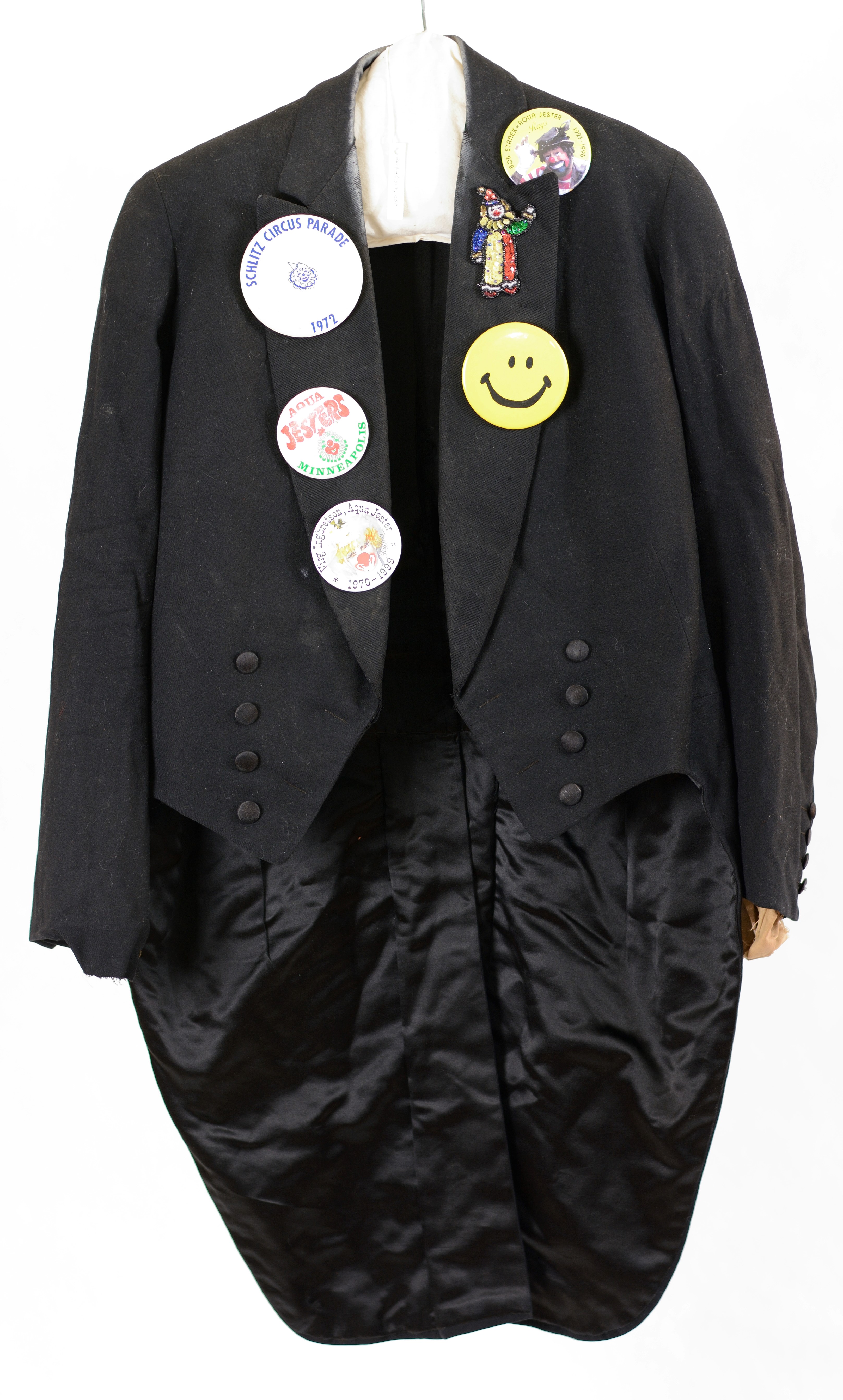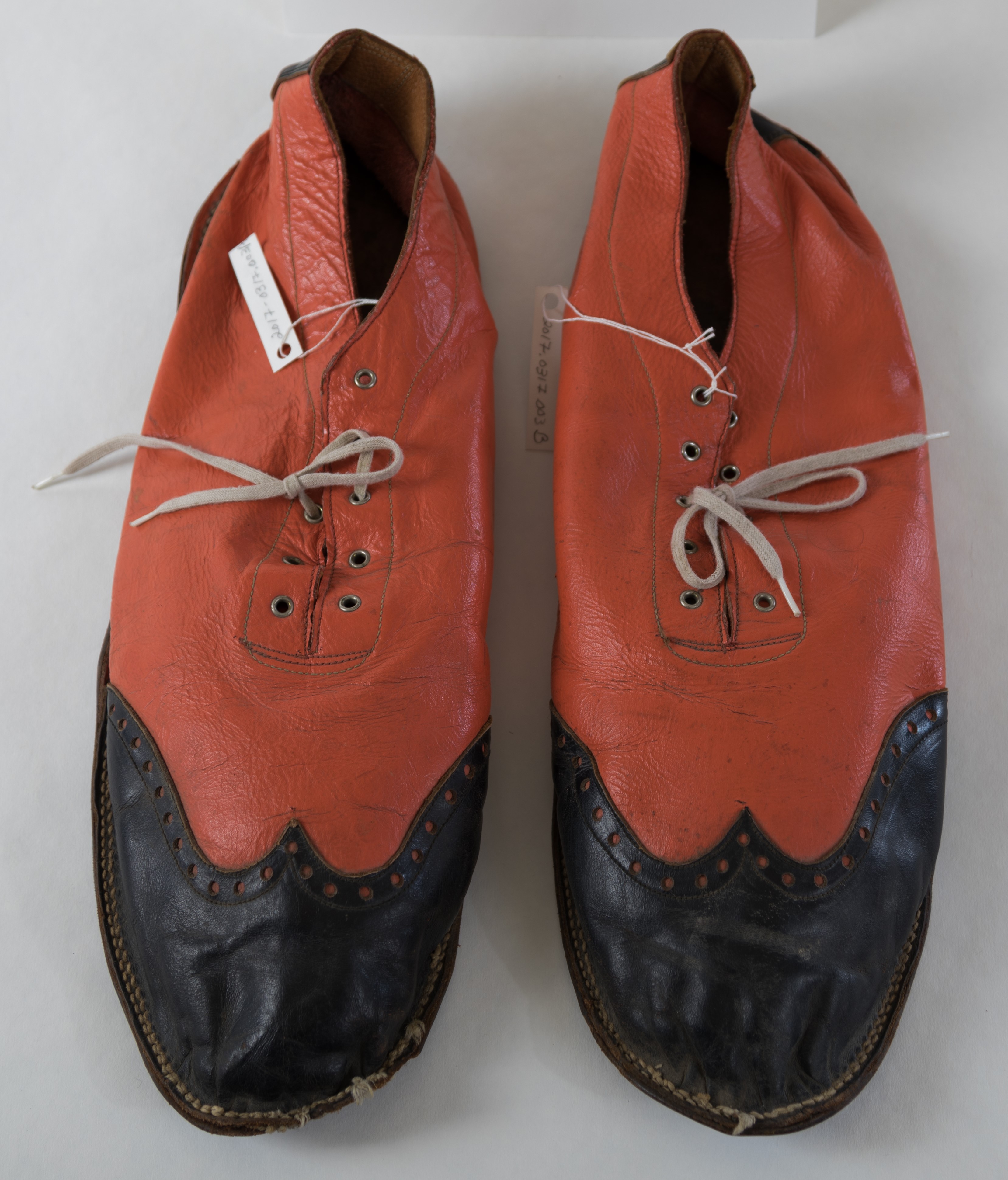May 8, 2017

Above: Aqua Jester Mike Hogan used this trunk at Aquatennials from the 1950s to the 1990s.
Clowns, jesters, and fools have existed for many hundreds of years in literature, dramatic performance, and pop culture. Children grow up seeing clown imagery with familiar characters like Ronald McDonald and the famous red clown noses sold to benefit charity. On a more sinister note, horror films featuring antagonistic clowns and sightings of people wearing creepy clown costumes to terrorize others have left many people with a fear or dislike of clowns, and have harmed the reputation of these performers. The objects of this week come from a trunk donated by Mike Hogan, an Aqua Jester clown between 1950 and 1990.
Len Jacobsson, another member of the Aqua Jesters, who performed at events like the Aquatennial, suggested that people who have a fear of clowns may have been embarrassed by one in the past. To combat this stigma, Aqua Jesters follow a strict code of ethics, with the guiding principle to make others laugh at their own expense rather than embarrassing their audience. Despite performing for laughs, many clowns take their craft seriously, working to perfect their appearance and comedic act. In response to the authenticity of the creepy clowns that were cropping up last year, performer Fred “Ozzie” Baisch pointed to their lack of dedication, saying, “No self-respecting clown would appear in a rubber mask.”

Above:; Hogan’s Aqua Jester coat is decorated with pins advertising the Aqua Jesters, the Schlitz Circus Parade, and two individual Aqua Jesters.
Not uncommon in Twin Cities history, a friendly sibling rivalry between Minneapolis and Saint Paul seems to have arisen even with their clown troupes. According to Katie Humphrey at the Star Tribune, community members in both Saint Paul and Minneapolis formed separate clown groups after World War II to perform at festivals. Later, Humphrey wrote, a women’s clown group called the Powder Puffs was formed because females were not allowed to join the male troupes. Camps and classes such as the Mooseburger Clown Arts Camp and the “Clowning Around” class at Lakewood Community College were created to train aspiring performers.

Above: Mike Hogan’s oversized clown shoes were part of the gift to Hennepin History Museum that included his Aqua Jester trunk and coat.
Clown troupes in the Twin Cities were once very popular and a staple at parades and fairs. Today, membership is waning. With fewer clowns comes fewer visits to places with people in need of some cheerful clowns, especially nursing homes and hospitals. It may be time for the younger generation to try and break the stereotype of scary clowns by joining these groups to keep this historical tradition going. If you’ve ever thought of donning a red nose and some oversized shoes, this may be your time to shine.
Written by HHM intern Caitlin Crowley. Caitlin is a current Augsburg student where she is majoring in history with a Medieval History minor. She comes to HHM through the Minnesota Historical Society’s ACTC extern program.
Sources
Al Sicherman, “Class Clown,” Star Tribune, December 29, 1991.
Katie Humphrey, “Send in the clowns: Volunteer clown clubs, a staple of civic festivals for decades, are seeking more members as longtime merrymakers age,” Star Tribune, August 24, 2011.
Mary Jane Gustafson, “There is lot more to clowning than meets eye,” Newspaper Clipping from Clowns Folder at Hennepin History Museum.
Reta Stewart, “Clown ministry draws appreciative audiences,” Newspaper Clipping from Clowns Folder at Hennepin History Museum, April 21, 1986.
Sharyn Jackson, “Minnesota clowns distraught over ‘creepy clown’ craze: Professional clowns are disheartened that their image is being used as a fear factor,” Star Tribune, October 12, 2016.
